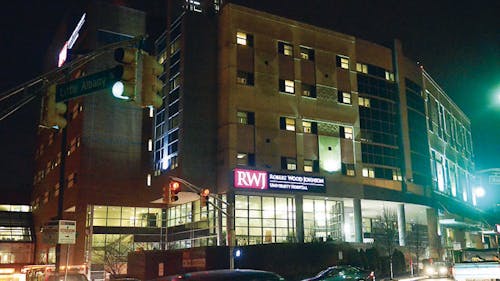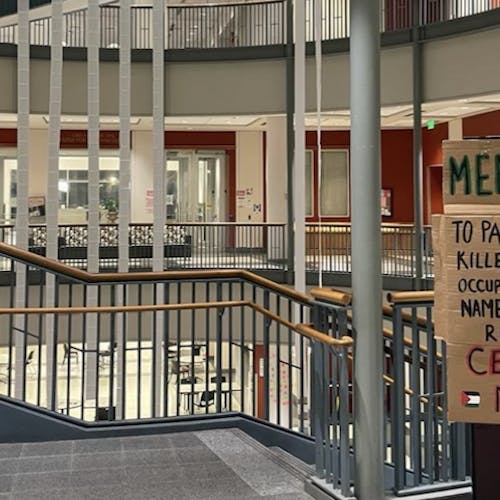Study expects health care act to increase insured NJ residents

New Jersey federally qualified health care centers (FQHC) and clinics will face demands from residents in 2014 if President Barack Obama’s Patient Protection and Affordable Care Act passes in its entirety.
About 85 percent of New Jersey adults, ages 19 to 64, have a usual source of medical care (USC), with 6 percent of those listing clinics as their primary source of care, according to a Rutgers Center for State Health Policy Facts and Findings report.
Those numbers are expected to increase with the implementation of the PPACA, which goes into effect in two years, said Dorothy Gaboda, associate director for Data Analysis Center for State Health Policy and co-author of the report.
The act, which Obama signed into law on March 23, 2010, reforms select aspects of the private health insurance industry and public insurance programs and offers insurance options for those who were previously denied because of previous medical conditions and strengthens Medicare, according to Healthcare.gov.
The report, “Differences Among New Jersey Adults Using Doctors, Clinics, and with no Usual Source of Care,” found that clinic users and those with USC are mostly minority and immigrant populations with a large majority being of Hispanic ethnicity.
Immigrants in New Jersey are more likely to be uninsured than U.S.-born residents, Gaboda said.
“Thirty-four percent of immigrant children are uninsured, and 71 percent of non-elderly adults in the country for less than five years lack coverage,” according to the report.
Hispanic non-citizens have the lowest rate of insurance coverage of all racial groups, Gaboda said.
“Asians in New Jersey seem to have more professional jobs [where] employers sponsor part of the cost of the insurance,” she said.
Gaboda said a large percent of immigrant Hispanics living in New Jersey are typically younger, and a significant percentage work jobs that do not provide for the cost of insurance.
Despite 2009 dates on the survey, Gaboda said the data still applies because New Jersey’s population has not changed substantially since then survey was conducted.
“We do periodically statewide household surveys that represent the state’s demographic, since the survey was completed in 2009, the state’s demographics have not changed that much,” she said.
Whether a person is insured or not is a typical health care community survey question, but the reason of why they are uninsured varies, Gaboda said.
“We don’t ask them specifically of why they are uninsured, but from other studies nationally, some young people think that they are healthy and don’t need it,” she said. “Others think that they are ineligible or are unaware they are eligible.”
Gaboda said people are discouraged from signing up for health insurance because those with undocumented people living in their homes. But she said this idea is false.
“Clinics in the state serve a socioeconomically poorer and sicker population than do doctors’ offices,” according to the report. “Demand for care at clinics is anticipated to increase following implementation of federal health reform.”
Gabriel Gonzales, a 24-year-old construction worker from New Brunswick, said he and his family of two children rely on health clinics as their USC.
“Times are hard. My family and I only go for health care when we need it, otherwise we give them Dimetapp when they have allergies,” he said. “They go to the clinics for shots when they are really sick. Otherwise we use what my mother taught me to treat them.”
Gaboda said this is based off results from Massachusetts and the state’s affordable health care program.
“[People are] getting care at clinics through the Massachusetts care act. [People choose] clinics rather than finding a private doctor,” she said. “People are not saying, ‘I’m buying health insurance and switching to a private doctor.’ We believe that people will go where they continued to go in the past.”
In order to serve that growing population of people using clinics, Kathy Grant-Davis, president and CEO of the New Jersey Primary Care Association, plans on opening another 30 FQHC locations in New Jersey, including one in Freehold and Somerset Counties, according to the news website NJ Spotlight.
Davis was unable to comment by press time.
New Jersey’s 20 FQHCs provide medical care to more than 400,000 patients across 105 sites throughout the state, according to an NJ Spotlight article.
The number of patients is expected to rise to more than 500,000 patients when the PPACA expands its Medicaid eligibility and offers subsidized health care coverage to cover residents generating low to moderate incomes, according to NJ Spotlight.
The rate of insured adults has not drastically changed, but the economic downturn has caused some to lose medical insurance because of unemployment, Gaboda said.
Shelia Wilson, a Highland Park resident, said since she was unemployed she no longer received medical insurance from her employer. She uses NJ Family Care when she needs a doctor.
“I have allergies, so I think it’s important to have health care,” she said. “There was one point where I was without it, and it was scary thinking that if I had a medical emergency, I would be out of luck.”
Gaboda said medical insurance is important despite the preconceived notion that younger people tend to be healthier.
“If you don’t know how to pay for your care — either private or public — people just forego care overall,” she said.



